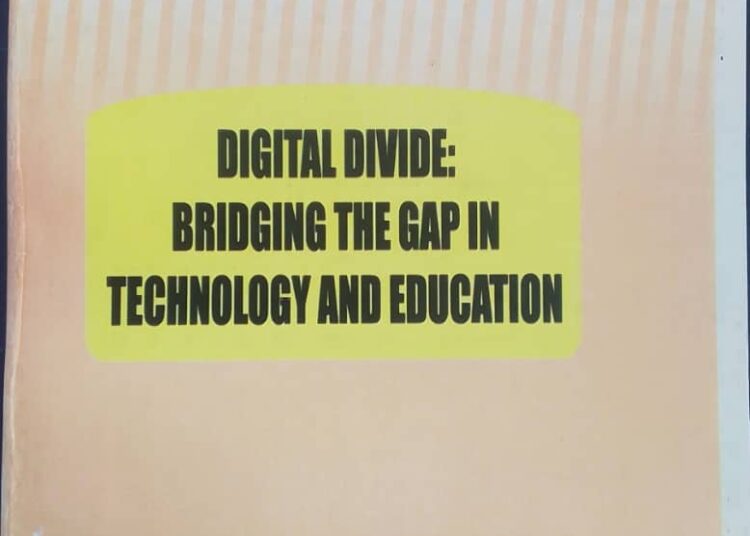A review of Edna Iya Adeyemi’s book, Digital Divide: Bridging the Gap in Technology and Education.
In the 21st century, technology plays a pivotal role in shaping the destiny of nations. Developing countries, particularly in Africa, face significant challenges in harnessing the power of technology to drive economic growth, improve education, and enhance the overall quality of life. Edna Iya Adeyemi’s book, “Digital Divide: Bridging the Gap in Technology and Education,” offers a timely and thought-provoking exploration of the need for African countries to leverage education to catch up with technological advancements.
Overview of the Book
The book published by Elittel Integrated Services, is divided into seven chapters, each focusing on a critical aspect of technology and education in developing countries. The topics range from the importance of science and technology in modern societies to the role of information and communication technology (ICT), telecommunication technology, and computer communication in the 21st century. The author’s robust ideas and well-reasoned arguments make a compelling case for using education to facilitate technological advancement in Africa and other developing countries.
Strengths of the Book
One of the book’s significant strengths is its emphasis on the importance of science and technology in modern societies. Adeyemi convincingly argues that African countries must prioritize science and technology education to drive economic growth and development. The book also highlights the need for African countries to adopt appropriate technology that is tailored to their specific needs and resources.
The chapter on ICT is particularly noteworthy, as it explores the potential of ICT to transform education and drive economic growth in developing countries. The author’s discussion of the challenges and opportunities associated with ICT adoption in Africa is insightful and thought-provoking.
Weaknesses of the Book
While the book is well-researched and informative, there are some areas that could be improved. The topics and chapters seem disjointed, lacking a clear narrative thread that ties the book together. Some ideas and concepts are repeated, and the discussion could be more concise.
Target Audience
Despite these limitations, the book is an invaluable resource for tutors and students in tertiary institutions across Africa and other developing countries. Policymakers and anyone interested in contributing to technological advancement in developing countries will also find the book informative and thought-provoking.
Conclusion
“Digital Divide: Bridging the Gap in Technology and Education” is a timely and important book that highlights the need for African countries to prioritize technology and education to drive economic growth and development. While the book has some limitations, its robust ideas and well-reasoned arguments make it a valuable contribution to the discourse on technology and education in developing countries.
The book’s emphasis on the importance of science and technology education, ICT, and appropriate technology adoption is particularly noteworthy. Adeyemi’s work has the potential to stimulate students’ interest in technology and inspire technological innovations in Africa and other developing countries.
In conclusion, “Digital Divide: Bridging the Gap in Technology and Education” is a recommended read for anyone interested in technology, education, and development in Africa and other developing countries. Despite some limitations, the book offers valuable insights and perspectives that can inform policy and practice in these regions.
Rating: 4/5 stars
Recommendation: This book is highly recommended for tutors, students, policymakers, and anyone interested in contributing to technological advancement in developing countries. Its robust ideas and well-reasoned arguments make it a valuable resource for anyone seeking to understand the complex issues surrounding technology and education in Africa and other developing countries.













